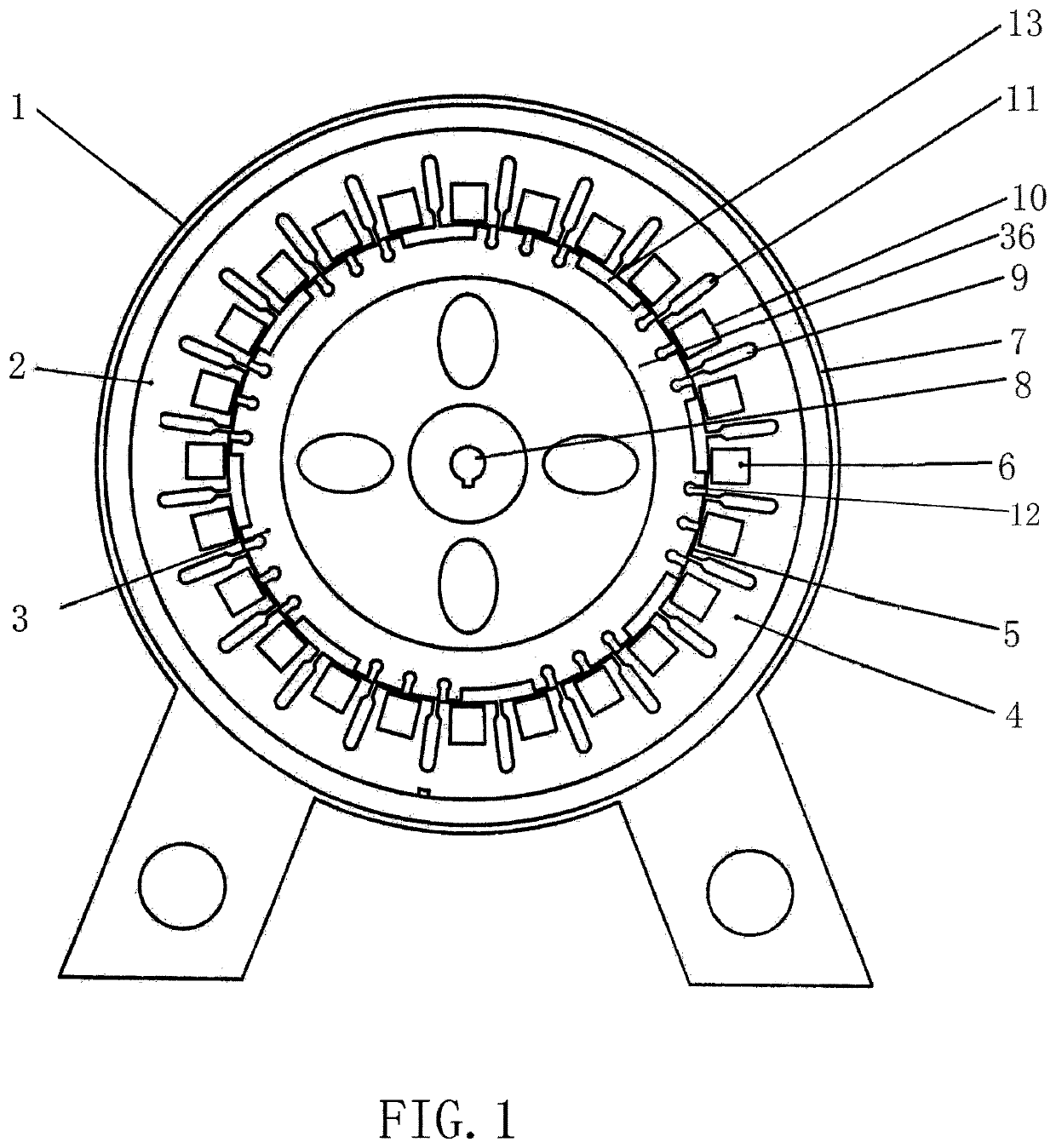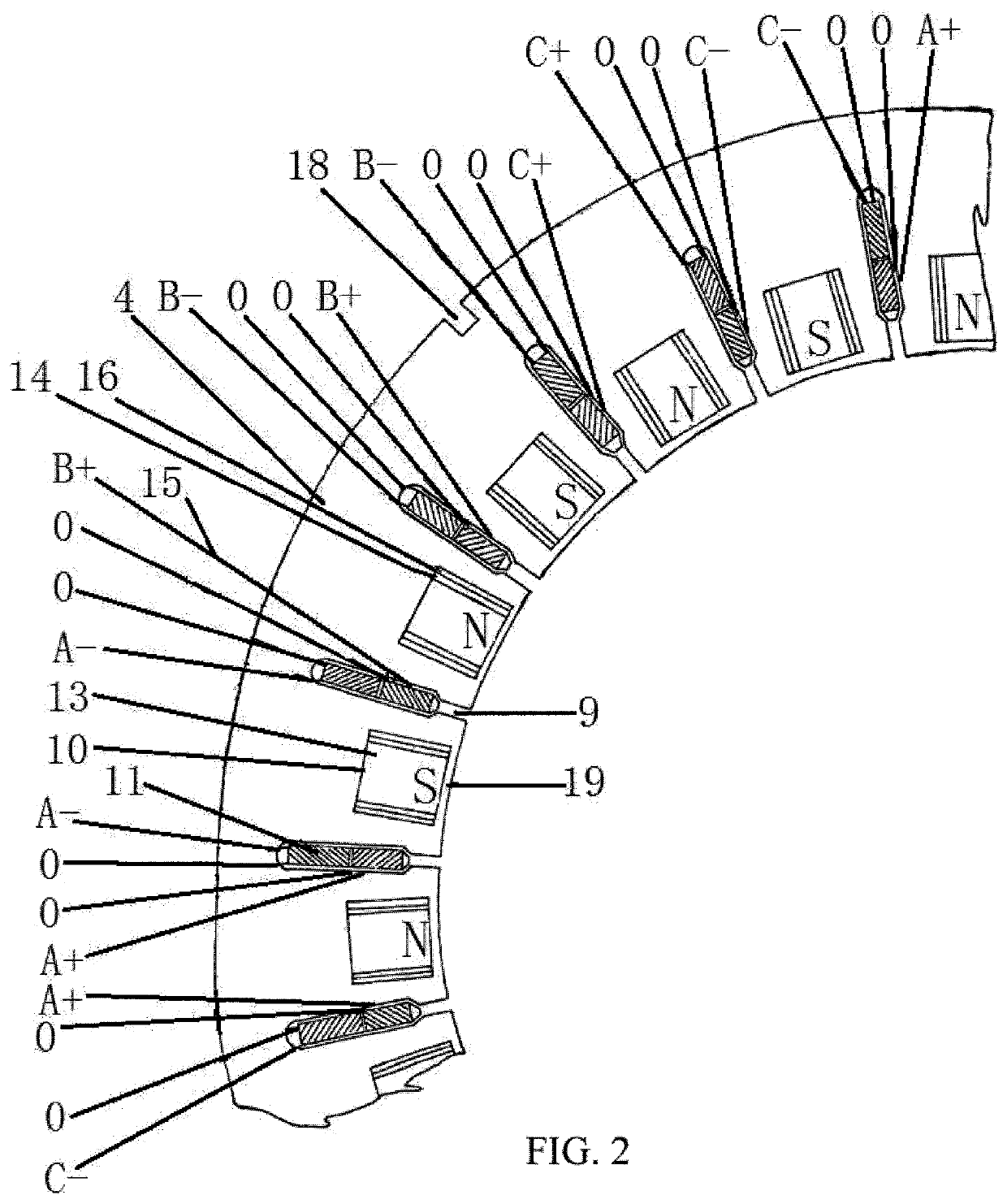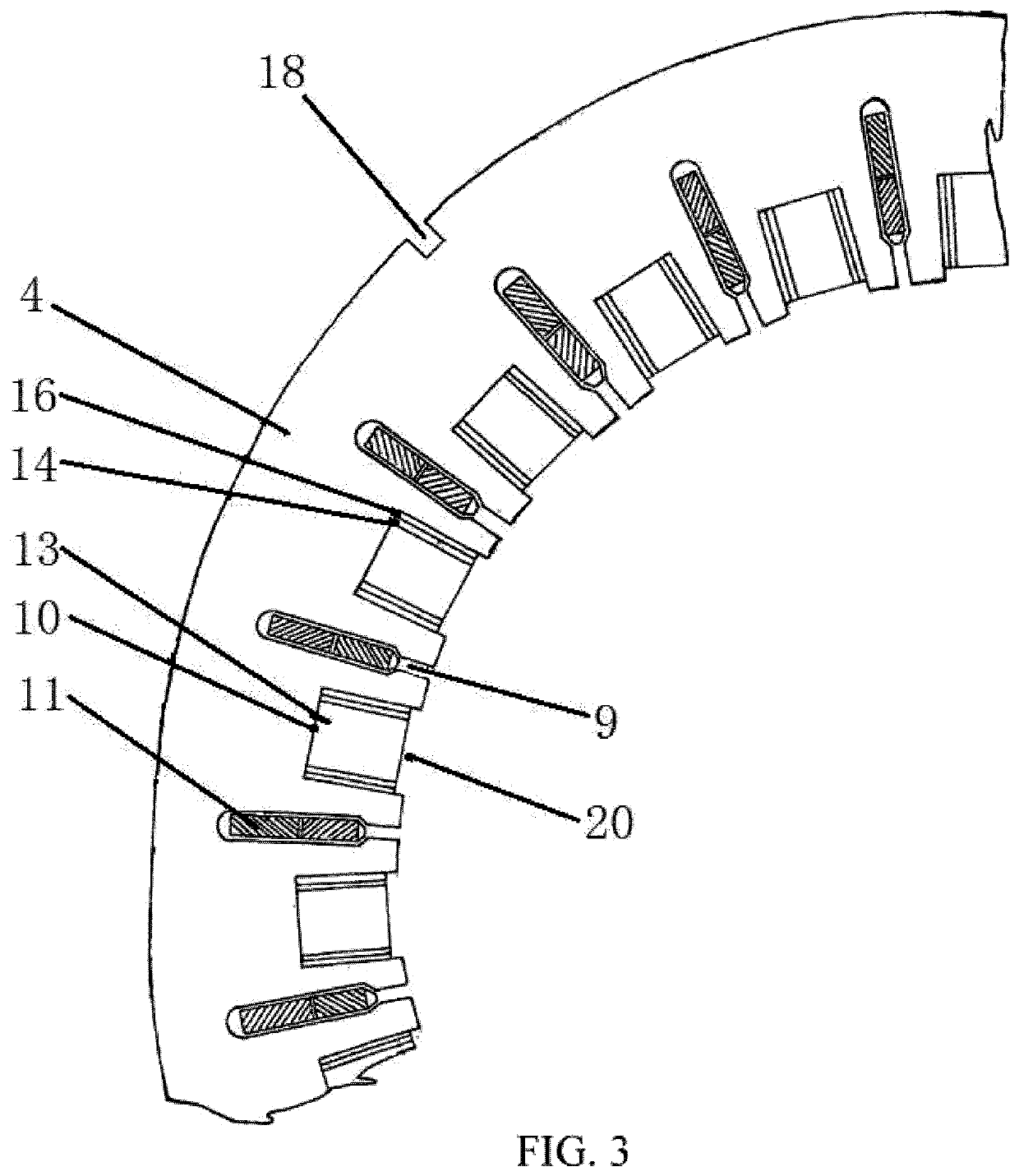AC permanent magnet motor
a permanent magnet motor and alternating current technology, applied in the direction of rotating magnets, magnetic circuit rotating parts, synchronous machines with stationary armatures, etc., can solve the problems of increasing the cost of electric power consumption of stators. , to achieve the effect of reducing magnetic resistance, facilitating smooth and continuous rotation, and facilitating operation
- Summary
- Abstract
- Description
- Claims
- Application Information
AI Technical Summary
Benefits of technology
Problems solved by technology
Method used
Image
Examples
Embodiment Construction
[0019]In embodiments of the present invention, with reference to FIG. 1, FIG. 2, FIG. 3, FIG. 4, FIG. 5, and FIG. 6, an AC permanent magnet motor 1 has a structure having an outer rotating hub and an inner stator or a structure having an outer fixed hub and inner rotating pivot. When sample design is researched, a wiring diagram of two-layer, cross, and short-distance windings that have 24 cable troughs and four poles in a most frequently used three-phase asynchronous motor is selected from a diagram set of commercially available motors. The AC permanent magnet motor 1 includes a stator 2 and a rotor 3 as one part and an external controller 30 as the other part. Some cable troughs 9 and some stator cores 4 are machined on the stator 2 of the AC permanent magnet motor. Same grooves 10 are provided inside the stator cores 4, and same winding coils 11 are inserted into the cable troughs 9. Surface magnetic polarities of permanent magnets 6 mounted in grooves 10 of stator cores of two s...
PUM
 Login to View More
Login to View More Abstract
Description
Claims
Application Information
 Login to View More
Login to View More - R&D
- Intellectual Property
- Life Sciences
- Materials
- Tech Scout
- Unparalleled Data Quality
- Higher Quality Content
- 60% Fewer Hallucinations
Browse by: Latest US Patents, China's latest patents, Technical Efficacy Thesaurus, Application Domain, Technology Topic, Popular Technical Reports.
© 2025 PatSnap. All rights reserved.Legal|Privacy policy|Modern Slavery Act Transparency Statement|Sitemap|About US| Contact US: help@patsnap.com



